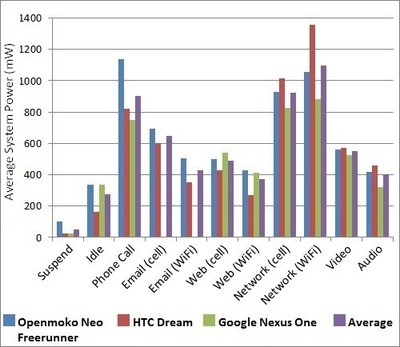Supercapacitor developments follow trends in consumer electronics
Consumer electronics and portable devices are becoming increasingly thinner and more power hungry, according to IDTechEx. The multiple functionalities at device level represent variable power demands. The new components are allowing a more efficient use of energy in portable devices.
Current examples of these trends include the recently launched Huawei Ascend P6 (only 6.18 mm thick) and the new iPad Air, which is the thinnest (7.5 mm) and lightest (0.470 g) version of Apple’s flagship tablet - only possible because it comes with a reduced battery capacity.
Indeed the Air comes with a two-cell, 32.9 Wh battery compared to the previous iPad’s three-cell, 42.5 Wh unit. However, Apple was able to cut the battery’s capacity without sacrificing battery life because the Air uses fewer and more efficient LEDs. The retina display has less than half as many LED lights (reduced from 84 to 36) but together with an optical film layer, which distributes the light across the LCD, it accomplishes the same level of brightness. Also both the LCD and front panel are thinner.

Source: IDTechEx and University of New South Wales
As IDTechEx points out in its report - Batteries & Supercapacitors in Consumer Electronics 2013-2023: Forecasts, Opportunities, Innovation - backlighting in smartphones represents a power-hungry and intermittent demand of energy, therefore accomplishing reductions on energy demand allows the effective reduction of the battery or the extension of its useful time. The other alternative to reduce energy demand is to buffer the power surges from the battery through other devices, and this is where supercapacitors have a role.
As in any other battery, energy and power will play against each other; increasing one will lead to the loss of the other. Accordingly, the capacity of lithium batteries (energy content) is reduced if we extract the energy quickly. This means, if we require high power from the battery we extract less total energy than if we would require low power. Variable power demands mean less available total energy extracted from the battery (and accordingly your battery running out quicker). In the consumer electronic industry this was not a problem in the past, since the mobile phone power demand profile was more or less constant and low. This was the case because mobile phones were only used to perform one or two basic functions.
As a consequence, lithium battery technology capabilities are being challenged by the modern multifunctional portable devices, which are increasingly requiring higher performance in terms of power density. While current research and development pathways aim for the emergence of a new generation of high energy density technologies, alternative energy storage technologies are challenging the dominance of lithium batteries.
This is the case with supercapacitors, which are an emerging energy storage technology whose characteristics make them strong candidates for satisfying those specific functions where lithium batteries underperform.
Interestingly, supercapacitors can deliver a considerable amount of energy at high power. These characteristics make them suitable for supplying high power in multifunctional devices where current batteries can’t provide it without reducing their total energy capacity.
IDTechEx has noticed increasing traction of the adoption of supercapacitors in smartphones. With devices becoming increasingly thinner, of course components need to follow suit.
Supercapacitor company CAP-XX announced early this year that it is ready to ship prototypes of its new 1 mm thick surface-mount supercapacitor to potential licensees. These are suitable for high-volume devices, where reflow solder board assembly is deployed - notably smartphones. This is not the company’s first experience with mobile phones since they have previously worked with Nokia to develop a supercapacitor solution for high-power mobile phone camera flashes.
Paper Battery Co stated last November 2013 that, by coupling their supercapacitor with a battery in mobile phones, it can extend the battery energy by up to 33%. This would be a killer value proposition in today’s multifunctional electronic devices. Their supercapacitors are the thinnest in the industry at just 0.3 mm. The company is aiming to start mass production in the first quarter of 2015 in the scale of hundreds of thousands of units.
IDTechEx sees that the industry is changing rapidly and supercapacitors have a key role as energy storage solutions for future consumer electronics and portable devices.
Electronex Sydney a major success
More than 1000 trade visitors and delegates have attended the Electronics Design & Assembly...
Gartner: Global AI chips revenue to grow 33% in 2024
Gartner has forecast that the revenue from AI semiconductors globally will total $71 billion in...
Electronex Expo returns to Sydney for 2024
Electronex — the Electronics Design and Assembly Expo will return to Sydney in 2024,...





